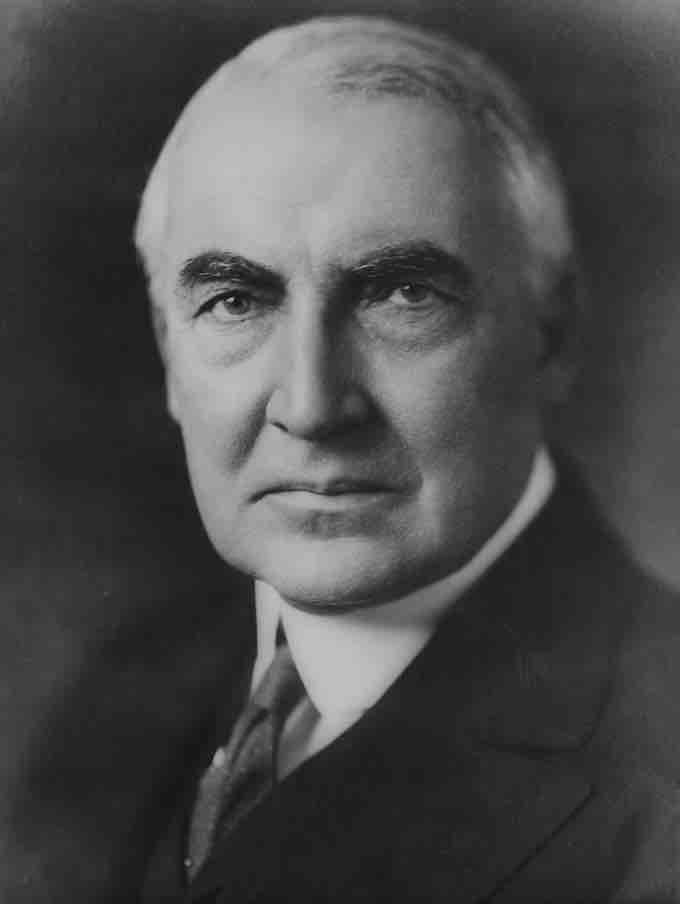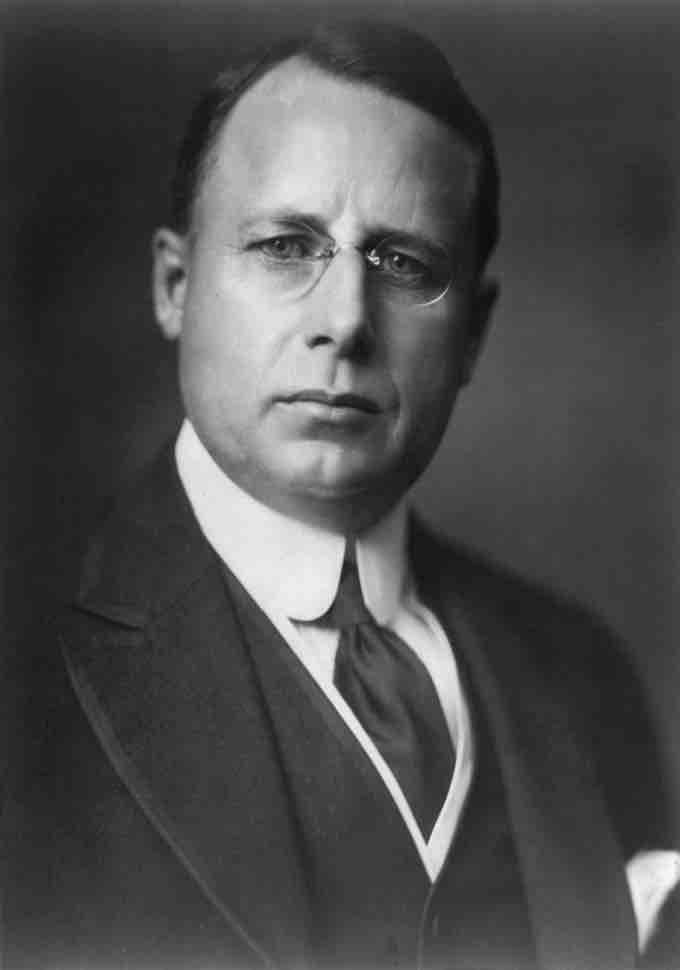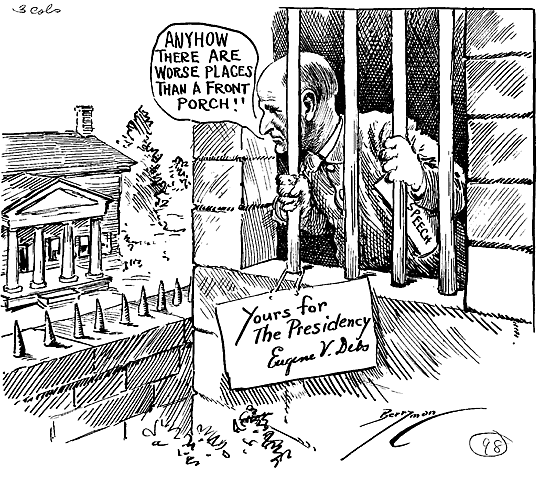The United States presidential election of 1920 was dominated by the aftermath of World War I. Along with a hostile response to certain policies of Democratic President Woodrow Wilson, there was a massive repudiation of the reformist zeal of the Progressive Era. Politicians argued over peace treaties and America's entry into the League of Nations, which produced an isolationist reaction. While revolutions dominated overseas politics, at home the wartime economic boom had collapsed and 1919 was marked by major strikes in the meatpacking and steel industries, large-scale race riots, and terrorist attacks on Wall Street that produced fear of radicals.
Wilson chose not to run for a third term and both major parties turned to dark horse candidates from Ohio, which was rich in electoral votes, while the third-party Socialists stuck with their chosen candidate of the previous four presidential elections.
Republican Party
Former President Theodore Roosevelt had been the frontrunner for the Republican nomination, but his health collapsed in 1918. He died in January 1919, leaving no obvious heir to his Progressive legacy. The Republicans chose Senator Warren G. Harding, an Ohio newspaper publisher, who chose to virtually ignore his opponent and instead run against the policies of Wilson.
Harding's main campaign slogan was a "return to normalcy," playing upon the weariness of the American public after the social upheaval of the Progressive Era. World War I and the Treaty of Versailles proved deeply unpopular, causing a reaction against Wilson, who had pushed especially hard for the latter. Irish- and German-American voters who had backed Wilson and peace in 1916 now voted against Wilson and Versailles. "A vote for Harding," said the German-language press, "is a vote against the persecutions suffered by German-Americans during the war."

Warren G. Harding, 1920
Republican Senator Warren Harding of Ohio secured a sweeping victory in the 1920 presidential election.
Harding relied upon a "Front Porch Campaign," bringing thousands of voters to Marion, Ohio, to hear Harding speak from his home. While staying primarily in one spot, he still spent $8.1 million on the campaign, primarily on national advertising with the theme “America First.” This was four times the amount spent by his Democratic opponent, James M. Cox, who employed a much more energetic strategy in the campaign.
Democratic Party
At the Paris Peace Conference in 1919, Wilson had reneged on his commitments to the Irish-American and German-American communities, which vehemently denounced him afterward. This set up a hard road for the next Democratic presidential hopeful, James M. Cox, who was the Ohio governor and, like Harding, a newspaper publisher who established a chain that still operates today as the media conglomerate Cox Enterprises.

James M. Cox, 1920
Democratic candidate James Cox, the governor of Ohio, lost to Warren Harding in the presidential election of 1920.
Cox conducted a whirlwind campaign that included rallies and formal addresses, visiting 36 states and making 394 speeches that reached an estimated total audience of up to 2 million people. Rather than follow the wishes of so-called Wilsonians, who wanted the election to be a “referendum on the League of Nations,” Cox instead focused on domestic issues including a fight against unemployment and inflation through his proposals to lower income tax and tax business profits.
Socialist Party
Socialist Party candidate Eugene V. Debs received 913,664 popular votes, 3.4% of the total votes, despite being in prison at the time for advocating non-compliance with the draft World War I. This was the highest number of popular votes received by a Socialist Party candidate in the United States, though not the largest percentage of the popular vote, as Debs had received double the vote percentage in the 1912 election. The 1920 election was his fifth and last attempt to become president.

Eugene V. Debs' Campaign From Prison
This cartoon depicts Socialist Party candidate, Eugene Debs, campaigning for president from prison in 1920. He was serving a sentence for encouraging people to avoid the draft in World War I.
Other Parties
Parley P. Christensen of the Farmer-Labor Party received 1% of the vote total, while Prohibition Party candidate Aaron S. Watkins came in fifth with .7% of the vote, the poorest showing for the Prohibition Party since 1884. Since the Eighteenth Amendment had already been passed the previous year, initiating the period of Prohibition that banned alcohol sales and consumption in the United States, this single-issue party seemed unnecessary to voters.
Election Results
Harding won a landslide victory, becoming the 29th President of the United States. He took 37 states, including the three most recently ratified states of Arizona, New Mexico and Oklahoma. His 26.2% is the largest margin of victory in the popular vote since James Monroe ran unopposed in 1820. The total number of votes cast in 1920 was approximately 26.8 million, an increase of 8 million from 1916. The Democratic Party vote total was almost exactly as in 1916 and Democrats took only 1,100 counties in the nation, but the Republican Party vote nearly doubled and nearly two-thirds of counties were carried by Republican candidates.
The election was the first since the ratification of the 19th Amendment on August 18, 1920, in which women gained the right to vote in all 48 contiguous states. As a result, the total popular vote increased dramatically. It was the first election in which the results were recorded by the Clerk of the U.S. House of Representatives, and the first of three elections to date in which a sitting U.S. senator became president (the others were John F. Kennedy in 1960 and Barack Obama in 2008.)
Despite Cox’s sound defeat, his running mate, Franklin D. Roosevelt, became a well-known political figure due to his energetic campaigning. In 1928 he was elected governor of New York, and in 1932 became the 32nd U.S. President, holding the office until his death in April 1945.